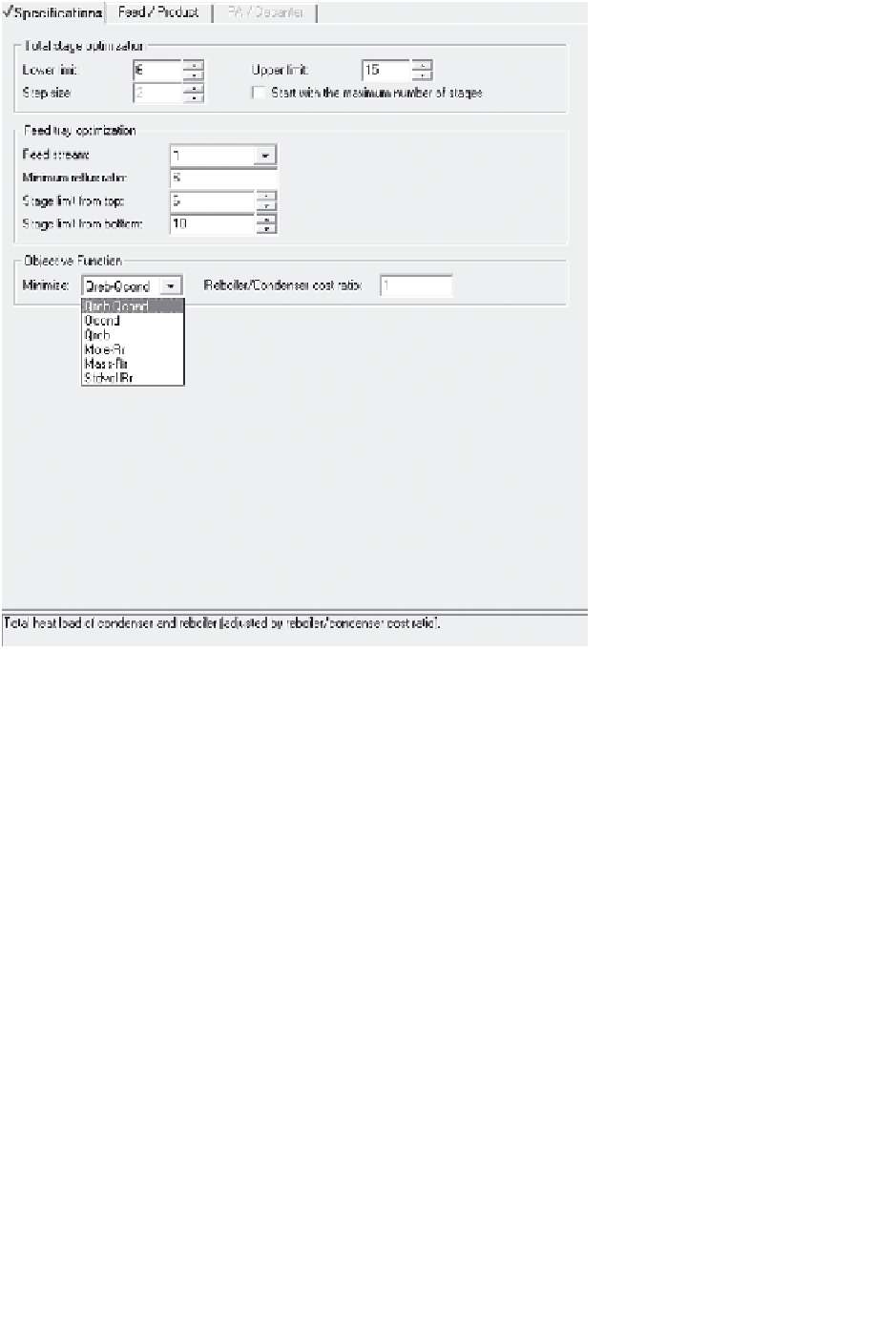Information Technology Reference
In-Depth Information
Figure 11.21
NQ curves specifications.
some of which are shown in Figure 11.22, are generated. The various reasons for the
errors include limitations at the bounds of perturbed variables. In this case the optimal
feed location and number of stages required were determined correctly from DSTWU
and are given in the base case solution. This will usually not occur unless the species
involved form relatively ideal mixtures.
Aspen Plus's RadFrac block provides many detail design functions, which are acces-
sible through the Tray and Packing Sizing and Rating folders under the RadFrac block.
These functions are based on vendor-provided information or well-known methods
described in the literature. Details of the calculations, correlations, and so on, are
given in Aspen Plus's Help documentation, Appendix A. An example of the tray design
input is given in Figure 11.23. Note that five different tray types are available. In this
example the sizing function was used for three sections of the column: enriching, feed,
and stripping. Results are shown at Examples/Example3b. When using RadFrac for
rating or simulation, the design specifications should be removed and operating spec-
ifications such as reflux ratio and distillate rate should be used. Additionally, the tray
or packing design specifications should be removed and replaced with the equivalent
tray and packing rating functions. An example of such an implementation is shown at
Examples/Example3c. Figure 11.24 shows an example of the packing input.










